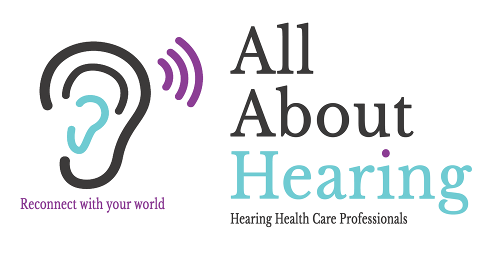A children’s screening test is usually a preliminary step in which a child’s hearing is checked to see if further evaluation is required. In other words, a screening test is a quick and cost effective way to screen and see if more detailed evaluation or further diagnostic testing is necessary.
The screening tests selected by your hearing practitioner will be the best suited for your child’s age, ability and their understanding of how to respond to each test. As well as your child’s over all individual needs and circumstances. Screening tests will involve a combination of behavioural and physiological screening tests.
Book an appointment now.
Consultation
Thorough full case hearing history discussed including: parent/teacher concerns, previous ear infections/respiratory infections, related surgery, ear or head trauma, family history of hearing loss. Motor/Physical Development, Speech/Language Development, Disabilities and much more.
A consent form will need to be completed at or before your appointment. If you would like to complete the consent form before your appointment, please download a copy here: Client (Child) Contact Information and Consent Form. Otherwise, please arrive 10 minutes before your appointment time to complete the form.
Otoscopic Examination
Visual inspection to check the appearance, structure and condition of the external and internal ear canal and tympanic membrane (eardrum). We will be looking for anything that may affect the test results such as excessive wax and to ensure there are no contraindications to placing an earphone or probe in the ear canal. We will also be looking for ear conditions such as ear infections, perforations (hole/s in the eardrum), inflammation, active fluid/drainage and many other possible abnormalities.
Conditioned Play Pure Tone Audiometry
Suitable from approximately 2 ½ years of age to 5 years of age. Assesses hearing using conditioned/taught responses to sound, by conducting fun filled and engaging play oriented listening activities, such as ‘Listen and Drop Games’.
This form of testing holds children’s interest and attention. Headphones are required to be worn by your child and when they hear a tone, your child puts a block in the box, piece in a puzzle, marble in the marble racer or peg in the pegboard to name a few fun games. Play Audiometry uses sounds at different volumes and pitches to assess the quietest sounds your child can hear at specific frequencies (pitches) of 500Hz, 1000Hz, 2000Hz and 4000hz. These four frequency bands are common for hearing human speech clearly.
Speech responses are also accessed using Picture Pointing Identification. Each ear is tested individually and this test is non invasive and painless but does require your child’s co-operation.
Conventional Pure Tone Audiometry – Air Conduction Testing
Suitable from approximately 5yrs to 7yrs of age and over. This involves being played a series of tones through headphones and responding/indicating with a hand raise or press of a button each time your child hears a tone.
More frequencies (pitches) can generally to be tested with this age group as they can often concentrate for a longer period of time. Frequencies are presented to find the quiet sounds your child can hear at 250Hz, 500Hz, 1000Hz, 1500Hz, 2000Hz, 3000Hz, 4000Hz, 6000Hz and 8000Hz.
Speech testing can often be performed for this age group by having your child repeat a list of age appropriate words, without visual cues. Each ear is individually tested and this test is also non invasive and painless but does require your child’s co-operation.
Tympanometry and Acoustic Reflex Impedance Screening- Middle Ear Function Tests
For Toddlers and Children from 2 1/2yrs and over. Tympanometry assesses the status of the Middle Ear System by introducing a probe and air pressure to the ear canal to measure the eardrum and middle ear bones (ossicles) ability to move/vibrate and measures the air pressure in the middle ear cavity.
Tympanometry identifies various Middle Ear Problems such as:
- Middle Ear Infections/Otitis Media
- Middle Ear Effusion/Fluid (MOE)
- Eustachian Tube dysfunction/Negative Pressure
- Eardrum (tympanic membrane) and middle ear bone (ossicle) movement
- Patent Tube (Grommet) active/inactive
- Perforation (hole in the eardrum)
- Impacted wax
Tympanometry can indicate middle ear problems, which may cause a conductive hearing loss. When a child has normal middle ear function, it may be possible to also screen for the presence of a muscle reflex in the middle ear called an Acoustic Reflex. The aim of an Acoustic Reflex threshold screening is to check the ear’s natural reflex and ability to reduce very loud sounds by contracting muscles in the middle ear.
Normally, these muscles in the middle ear contract at sounds between 65dB and 95dB. The same equipment is used for the Acoustic Reflex Screen as in the Tympanometry Screen, with one exception; a loud tone (around 80 dB) will be introduced to test your child’s acoustic reflex. If there is no reflex, or the reflex occurs at a higher decibel, it may be a sign of nerve damage or a neurological problem.
Both these tests require no response or indication from your child and little to no co-operation is needed from your child to perform these tests. We will always tell your child what to expect (and may even demonstrate on a doll), so he/she isn’t surprised during the actual test. Tympanometry may be slightly uncomfortable for your child, but it is considered risk-free. Once your child is sitting still, we can perform this test.
Test Results and Reporting
A copy of the screening test results will be given to the parent/guardian at the end of the appointment. A report will be posted to your child’s G.P. with the test results and recommendation for further action or further testing if required. A written consent from parent/guardian is required to send a report to your G.P. or any other Health Care Practitioner. Reports can also be sent to your child’s Ear Nose and Throat Specialist, Paediatrician, Speech Pathologist, Child Psychologist, Counsellor or other Allied Health Care Practitioners.

